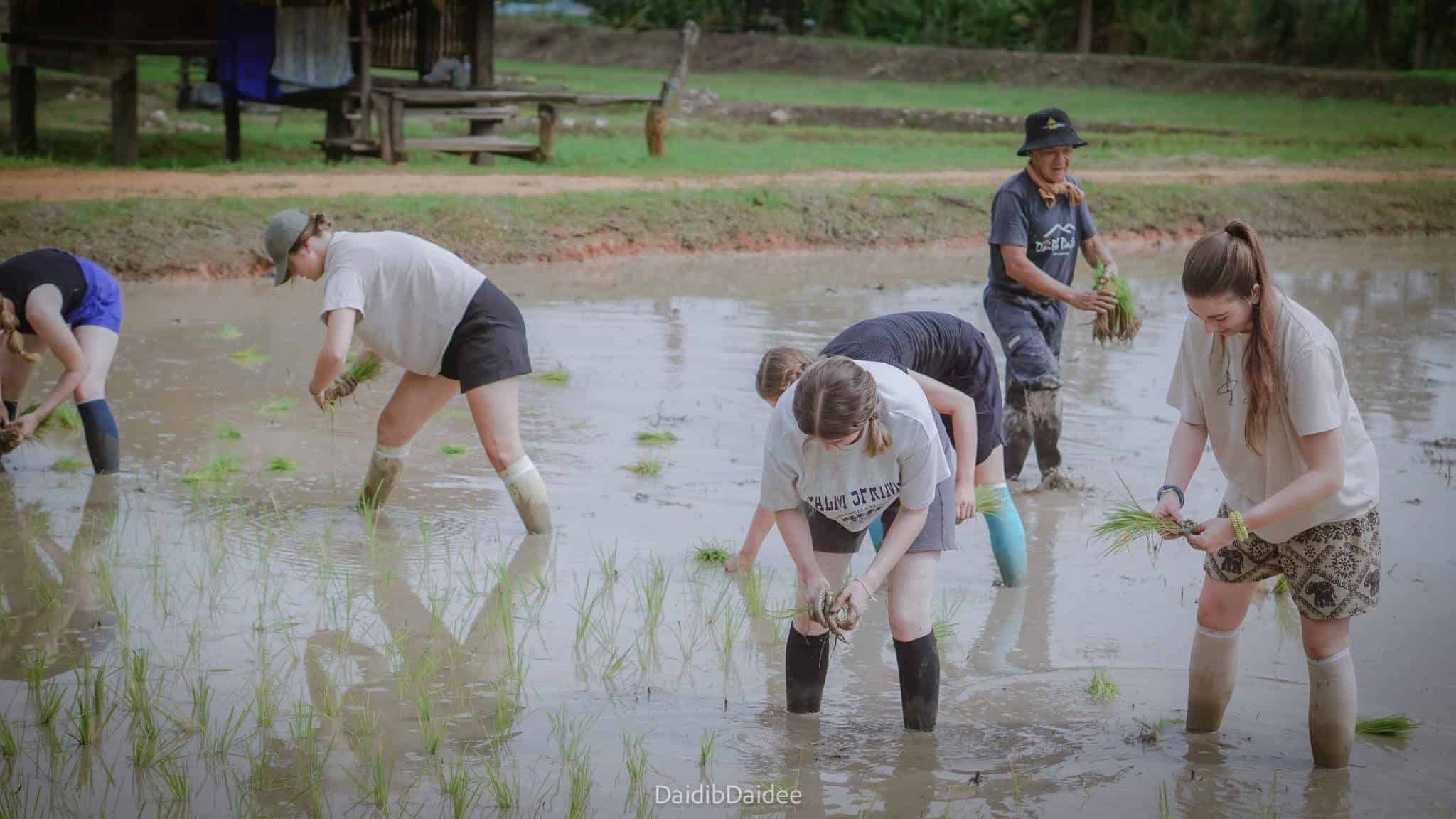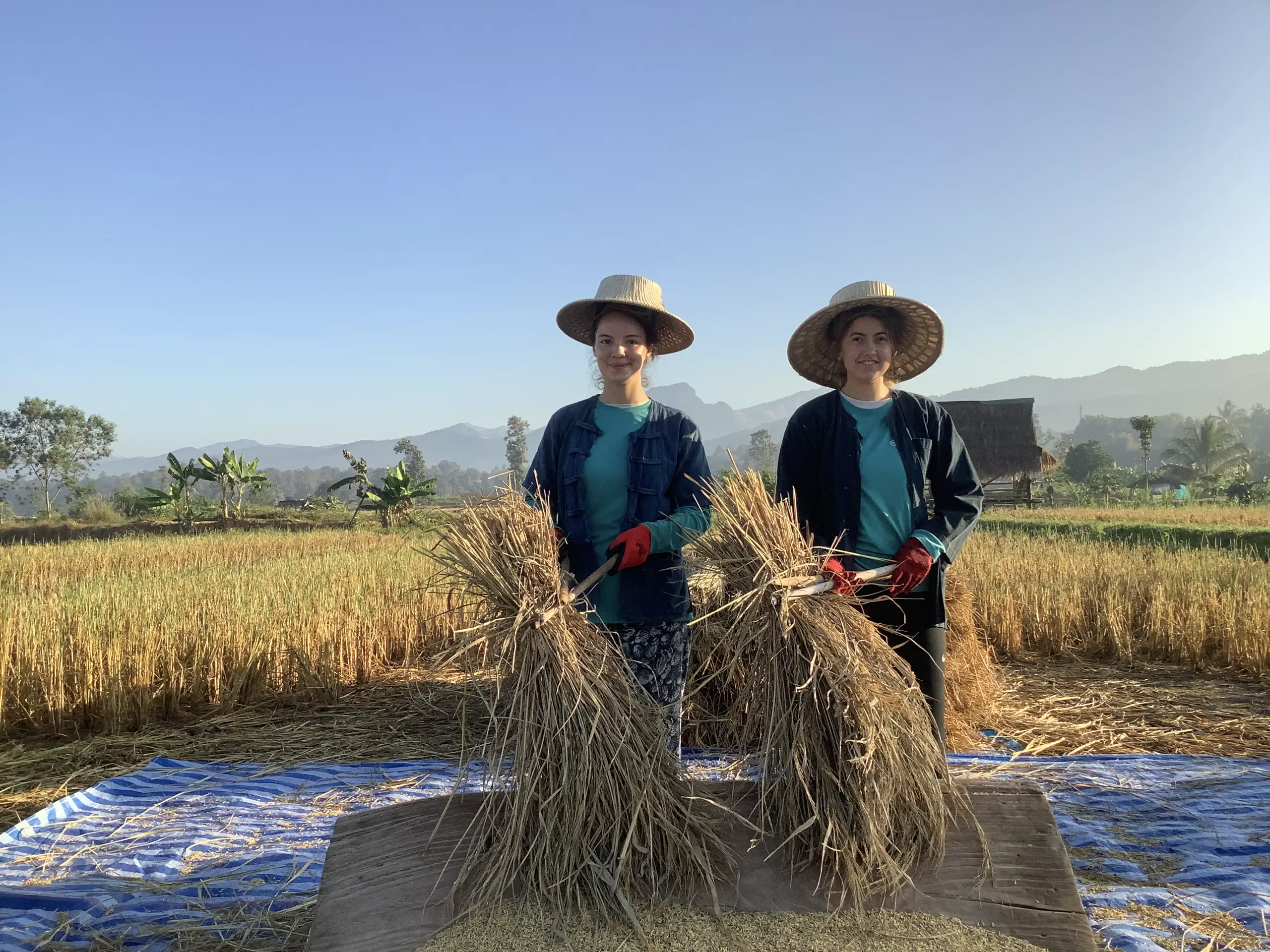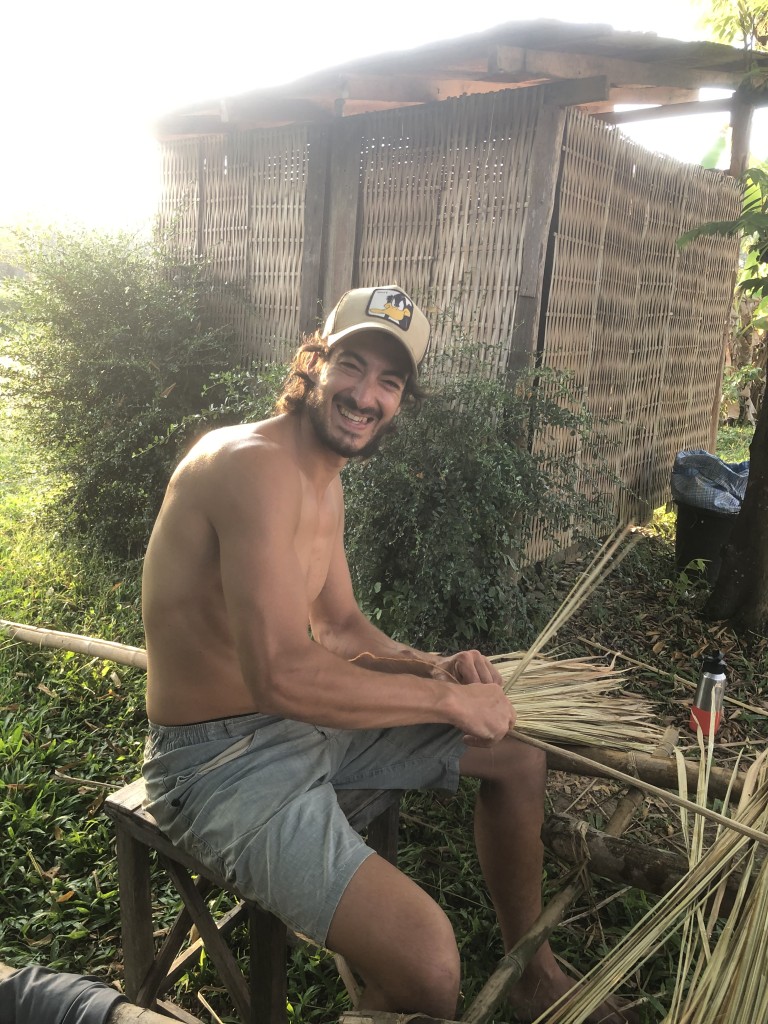About DaiDib DaiDee
Daidib Daidee farm is run by a family father, mother and a son located in Pua a small district north of Nan province bordered by mountains, with its very own unique culture and natural beauty.
Hello everyone! My name is Bird, I was working in Chiang-Mai as a photographer for 2 years then decided to become a farmer and create a Thai traditional agriculture permaculture farm in 2018. I wish to create a relaxing place that allows people from all over the world to take their time to experience life in harmony with nature. I also have four water buffalo on our farm, named Tony, Laura, Hanna and Charlie. We are a local family with a desire to preserve our simple, sustainable way of life so that we can give back to and protect mother earth.
Our farm is located in Pua city, 70 km north of Nan province surrounded by the mountains and rice fields, in Northern Thailand. The farm is set on 1.5 acres of land with vegetable gardens, rice paddies, farm stay and pizza restaurant.
Currently, we have done with natural buildings on the farm, including bamboo huts, fences, and wooden houses.
After witnessing the chaos of the modern world and the impact of city living on the environment, we realised how important it is to establish a sustainable lifestyle with more simplicity. The purpose of our permaculture farm is to preserve the traditional way of life and maintain a close connection to nature.



Our family-run organic permaculture farm is surrounded by rice fields, streams and forests. We have built several buildings with local materials including bamboo huts, bamboo fences, and wood houses. Our wish is to continue to expand the farm with more natural buildings where appropriate.
We have an organic garden which provides for three home-cooked meals daily, with vegetarian options upon request. We have 4 buffaloes to produce manure for our garden. The food we produce is high quality and safe from chemicals. We carefully make use of natural resources to keep a balance in the environment, production systems, consumption and the use of local resources.

Staying at our farm gives you the opportunity to experience our living way. Join meditation every morning after getting up or do some basic yoga to get mind and body ready for activities. We provide local Northern vegetarian food 3 meals a day as well as some open-air hut for sleeping in the middle of the fields under the millions of stars. Enjoy the beauty of the breath-taken view that is surrounded by the great mountains and valleys. Many adventures are to be had here, like exploring local caves, waterfalls and trekking. You can also learn from the villagers to make some local handicraft pieces like weaving and natural cotton tie-dye.
“Life is better with a Buffalo” is our farm goal and “Happiness only real when shared “ is our motto. You will learn how to live with buffalo such as, how buffalo help farmers working on the farm, also will enjoy bathing with them. And you will have a great time with community sharing.
In the past before the tractor and other machines were invented, buffalo played a big role in Thai living as they could do everything that a tractor can without consuming petrol gas but fresh grass and leftovers from the farm. Moreover, their manure is organically nutritious for our vegetables and fruit trees. Therefore, having them here is a very sustainable way of growing our own food.


Sustainable Agriculture, as well as Alternative or Permanent Agriculture, are all agricultural systems with similar principles. The emphasis is on ecological balance, good quality produce, self-sufficiency for farmers. The systems also highly value the local community and knowledge.
The main foundation of sustainable agriculture focuses on food production and livelihood, rather than exporting of goods, this way farmers do not have to follow market trends.
At our farm, family members work together happily and to live harmoniously with nature, allowing these agricultural systems to continue as long as possible without any negative impact on the ecology. That is the meaning of sustainable agriculture: a system that integrates and connects soil, cultivation and animal husbandry.

As well as prioritizing techniques consistent with local natural processes, our focus is on ceasing or reducing the use of external resources that may be harmful to the environment and/or the health of farmers and consumers. This is covered in 3 basic principles:
- Economic sustainability means developing soil management and crop rotation that increases productivity and reduces dependence on machinery and chemicals for agriculture, such as fertilizer, herbicides and pesticides.
- Environmental sustainability strives to avoid and find substitutes for the use of harmful synthetic chemicals. This is done by protecting, preserving and reusing natural resources, such as land (soil), water and living organisms in the forest.
- Social sustainability implies using more human labor, at least for some agricultural techniques, in the aim to achieve justice and solidarity in society.

1. Shifting cultivation system
The shifting cultivation system is a traditional agricultural system that has been practiced in many cultures in the past, but nowadays it is almost extinct in the Northern and Western regions of Thailand. The method involves occupying one area at a time to cultivate plants. This is done by planting mixed crops including rice, vegetables, and other useful plants in the same area. After planting for a while, the soil decreases in fertility, the crops are then moved to be cultivated in a new area so to let the soil recover its natural richness. Once this is achieved, the crops are circulated back so that the land is used again.
Even though the shifting cultivation system requires more land to be rotated, it is a model that promotes greater biodiversity and soil fertility. Farmers who practice this agricultural system show how valuable it is in respecting nature through a humble lifestyle. The shifting cultivation system offers a soil remediation system compatible with food production while conserving natural resources at the same time. Thai hill tribe communities in the North have continued to use this method of food production for a long time and it is passed down from generation to generation.
2. Integrated farming
Debris and by-products of both plants and animals can be beneficial to another party’s activities, such as integrated farming is an agricultural system in which many plants are grown in harmony with farm animals in the same area. The different types of productions are then beneficial to one another, while efficiently using the land.
The idea is to coordinate plant cultivation and animals grazing in a harmonious environment. The coexistence is expressed in many relationships: between plants and plants, plants and animals, or animals and animals. For a mixed agricultural system to be successful, it must be formed and implemented as a priority. There is a focus on constant environmental balance, as well as increasing the abundance of natural resources.
- Fish farming in rice paddies which will produce both rice and fish without using chemicals
- Raising chickens in a coop above a fish pond gives fish food from chicken manure
- Beekeeping in an orchard enables the bees to help pollinate the flowers and provide honey
In addition to the integration of various plants and animals, there is also agricultural product management that takes into account the market.
3. Mixed farming (Mixed/Diversified/Polyculture Farming)
Mixed farming is an agricultural system that has multiple streams of produce (such as several different crops or livestock) to meet consumption or reduce the risk from unstable market prices. This helps to reduce costs, but it is not focused on considering the environment like integrated agriculture. New farms will tend to do mixed farming to grow and protect their profits in the marketplace.
